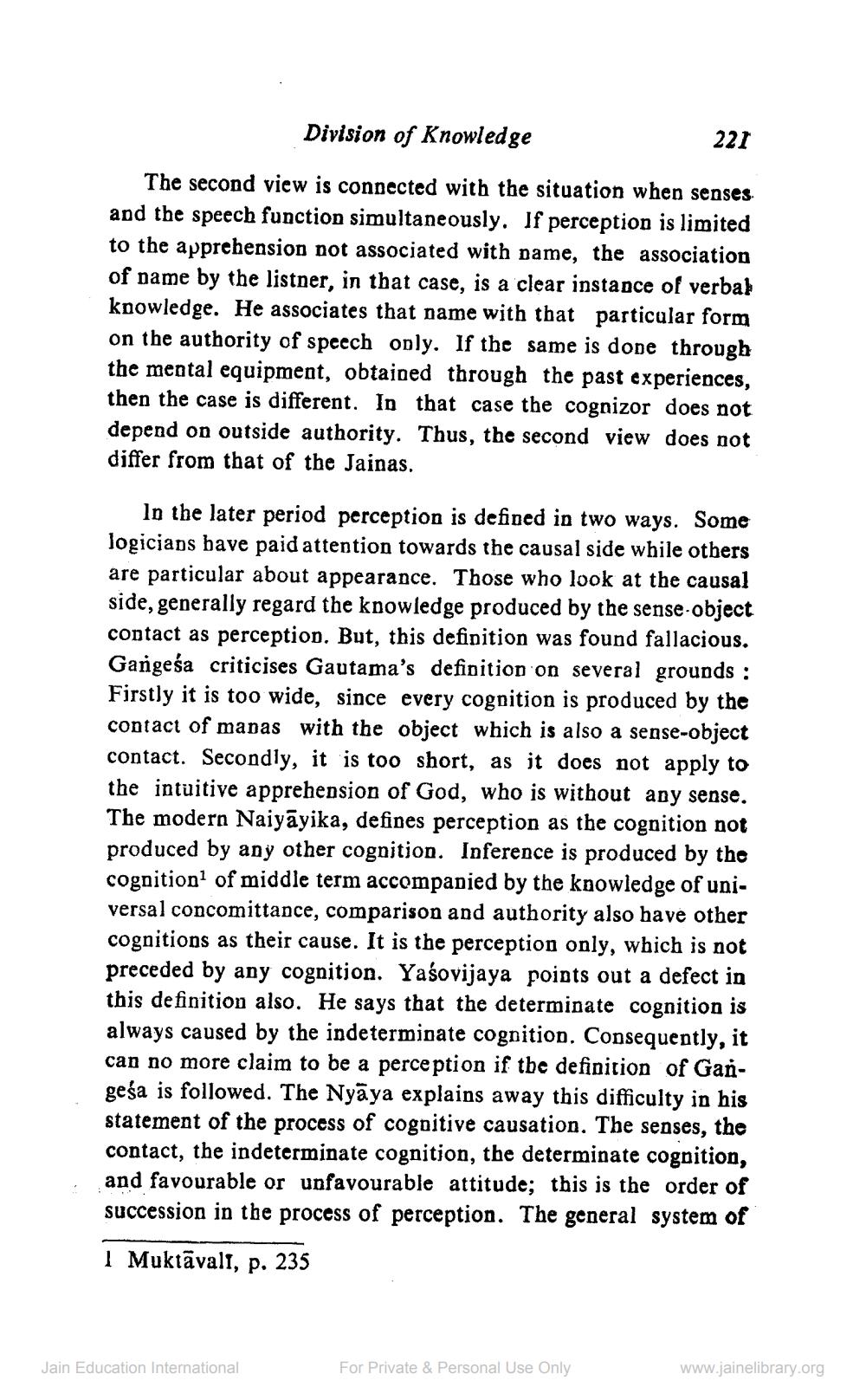________________
Division of Knowledge
221
The second view is connected with the situation when senses. and the speech function simultaneously. If perception is limited to the apprehension not associated with dame, the association of name by the listner, in that case, is a clear instance of verba! knowledge. He associates that name with that particular form on the authority of speech only. If the same is done through the mental equipment, obtained through the past experiences, then the case is different. In that case the cognizor does not depend on outside authority. Thus, the second view does not differ from that of the Jainas.
In the later period perception is defined in two ways. Some logicians bave paid attention towards the causal side while others are particular about appearance. Those who look at the causal side, generally regard the knowledge produced by the sense object contact as perception. But, this definition was found fallacious. Gangeśa criticises Gautama's definition on several grounds : Firstly it is too wide, since every cognition is produced by the contact of mapas with the object which is also a sense-object contact. Secondly, it is too short, as it does not apply to the intuitive apprehension of God, who is without any sense. The modern Naiyāyika, defines perception as the cognition not produced by any other cognition. Inference is produced by the cognition of middle term accompanied by the knowledge of universal concomittance, comparison and authority also have other cognitions as their cause. It is the perception only, which is not preceded by any cognition. Yaśovijaya points out a defect in this definition also. He says that the determinate cognition is always caused by the indeterminate cognition. Consequently, it can no more claim to be a perception if the definition of Gangeśa is followed. The Nyāya explains away this difficulty in his statement of the process of cognitive causation. The senses, the contact, the indeterminate cognition, the determinate cognition, and favourable or unfavourable attitude; this is the order of succession in the process of perception. The general system of
I Muktāvali, p. 235
Jain Education International
For Private & Personal Use Only
www.jainelibrary.org




